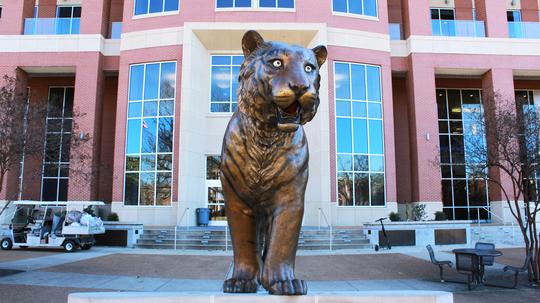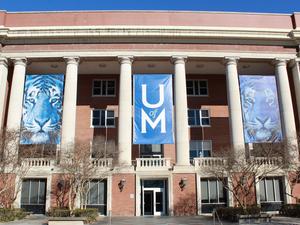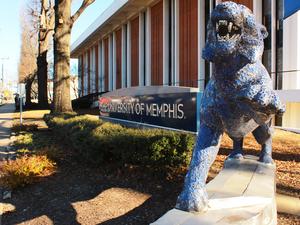
In December 2018, when University of Memphis leaders decided the school should wholeheartedly pursue R1 status and be designated as a top-tier research school, consultants said the process would take 10 to 20 years.
From their point of view, it seemed like an arduous task. The status bestowed by the Carnegie Classifications of Institutions of Higher Education was highly sought after by collegiate institutions.
And at the time, only two schools in Tennessee had it: Vanderbilt University and the University of Tennessee at Knoxville, which tend to have more resources. The University of Tennessee (UT) receives roughly double the state funding the U of M does annually.
But the school’s board of trustees embraced the effort, and faculty members rallied around it. They planned ambitious research projects and sought large federal grants. In FY 2021, U of M’s research award number surpassed $50 million.
“I’ve never seen a whole campus — every college — come together on a common goal like this,” said Dr. Jasbir Dhaliwal, U of M’s EVP of research and innovation, who also spearheaded the effort. “The passion of the faculty for a goal like this can never be underestimated.”
Now, that passion has helped slash the consultants’ 10-to-20-year prediction down to three, as U of M has gained R1 status and established itself as a top-tier research institution — an achievement that Dhaliwal believes gives the state another flagship public university.
“From a research perspective, the state of Tennessee has a very bright outlook,” he said. “We have an R1 private school, Vanderbilt, right in the middle, and then two public flagship research universities [U of M and UT] at each end of the state, that are both R1.”
The positives of R1 status
But what exactly does R1 status do?
It designates U of M as a doctoral university with “very high research activity.”
Previously, the school was a tier down, with an R2 listing that means it has “high research activity.” But it now joins the University of Arkansas, University of Mississippi, Mississippi State University, and University of Southern Mississippi as the other tri-state schools — besides UT and Vanderbilt — that have R1 status.
High levels of research expenditures are a key part of gaining R1 status; and U of M was buoyed in its quest by an 80% increase in federal research awards since FY 2019, with the school scoring large grants from notable federal agencies.
For instance, in FY 2021, $8.91 million in awards came from the National Science Foundation (NSF) and $6.57 million came from the National Institutes of Health (NIH). Another $5.16 million was earned from the U.S. Department of Education, and overall, eight different federal agencies gave research awards worth more than $1 million.
Now, the school and community could see major benefits from the R1 distinction, which Dhaliwal believes will draw high-caliber students and faculty.
“The top professors and the top researchers always go to the top schools, and now we’re a part of that,” he said.
It also will give the school the chance to compete for even larger research grants — Dhaliwal explained that the biggest ones are often reserved for R1 institutions — and it could even help the school switch conferences.
“Another benefit will be conference realignment,” he said. “The fact that even the Big 12 has some R2 members, they can never now tell us that we’re not ready from an academic perspective. We’re on par with all the SEC schools. I think this will really boost our athletic programs.”
Economic benefits for the city could be significant too, as a 2020 economic impact report from the U of M estimated that gaining R1 status could have an economic impact of $218 million each year, provide $98 million in labor income, and create about 1,550 jobs.
Defending your title
There is a caveat, however, to gaining R1 status.
Once you get it, you have to re-earn it every three years, when Carnegie releases the new rankings.
It isn’t unheard of for schools to lose R1 status, either. According to The Washington Post, Dartmouth College, Mississippi State University, the University of Alabama at Huntsville, and five others lost R1 status in 2015. While Mississippi State and Dartmouth have since regained it, University of Alabama at Huntsville remains an R2 university.
“There are so many universities that have made this their mission now,” Dhaliwal said. “The economic benefits of being R1 are tremendous.”
So, this means U of M must continue to vigorously pursue large projects and take steps to strengthen their research backbone, to keep their newfound status.
This will come in part, Dhaliwal said, by adding professorships to retain top faculty members, and growing research capacity by hiring more researchers and post-doctoral fellows.
It could also come through more funds from the state of Tennessee, which the school wants.
While it managed to gain R1 status with significantly less resources than other universities, Dhaliwal said, more aid in the future would be ideal. And U of M is asking the state for $50 million for a research endowment.
“We did it on a very narrow straight, so now the question becomes, 'How do we sustain it?'” Dhaliwal said. “We really need the support of the state ... and I think the campus community has shown the passion that we can do this, and that Nashville knows this is important to the state, and important to West Tennessee."








